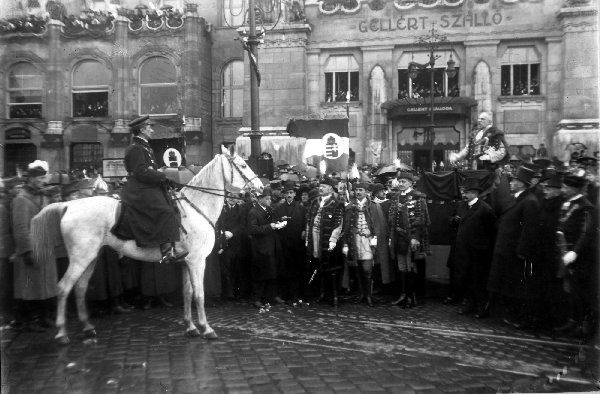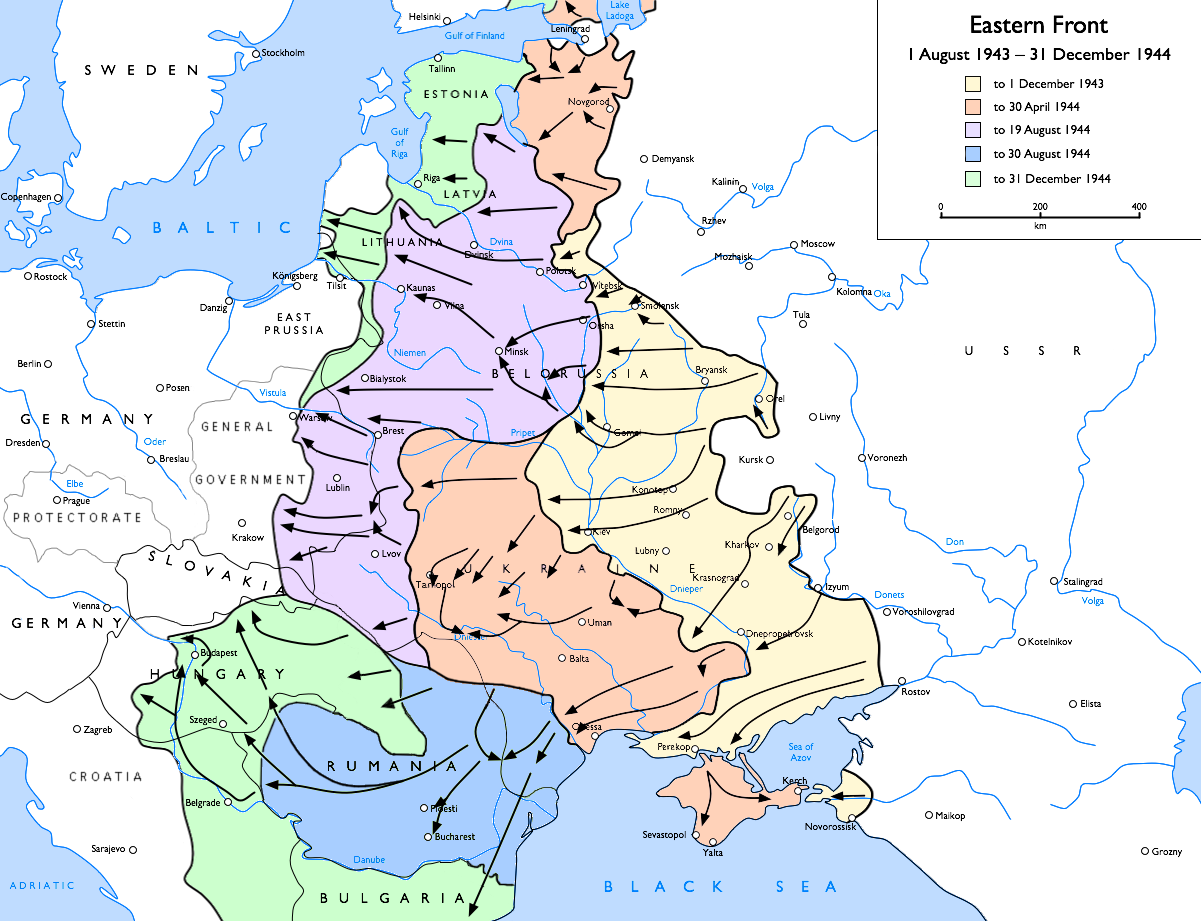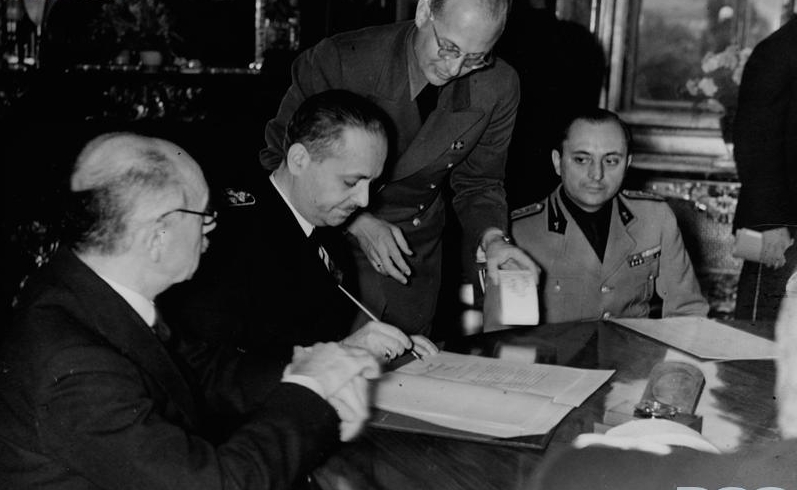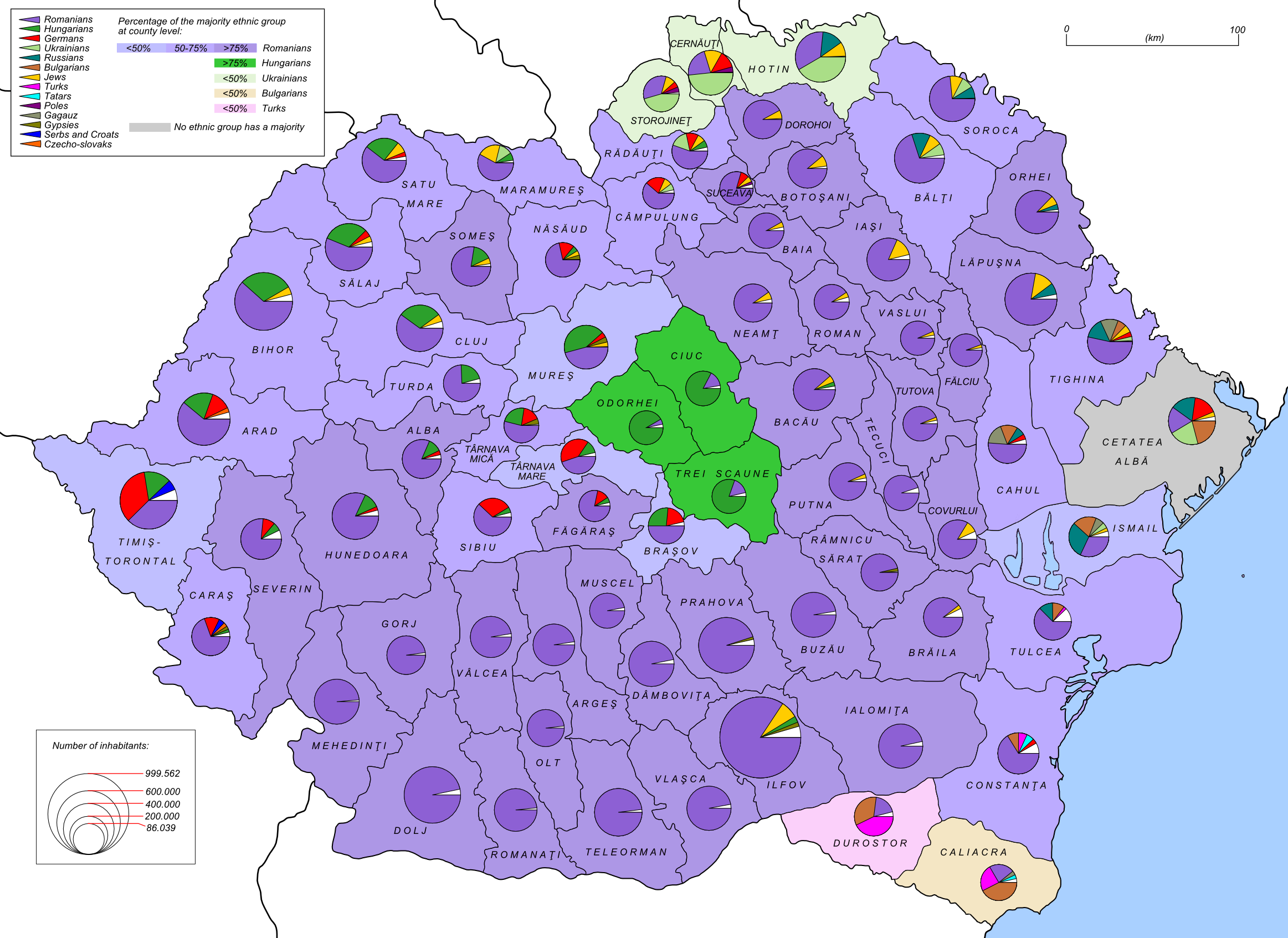|
Hungarian First Army
The Hungarian First Army was a field army of the Royal Hungarian Army that saw action during World War II. Commanders * Lieutenant-General Vilmos Nagy - March 1, 1940 – February 1, 1941 * Lieutenant-General István Schweitzer - February 1, 1941 – August 1, 1942 * Lieutenant-General István Náday - August 1, 1942 – April 1, 1944 * Lieutenant-General Géza Lakatos - April 1, 1944 – May 15, 1944 * Lieutenant-General Károly Beregfy - May 15, 1944 – August 1, 1944 * Lieutenant-General Ferenc Farkas de Kisbarnak - July 25, 1944 – August 1, 1944 (acting) * Lieutenant-General Béla Miklós von Dalnoki - August 1, 1944 – October 16, 1944 * Lieutenant-General Dezső László - October 16, 1944 – May 8, 1945 Background Under Hungarian Regent, Admiral Miklós Horthy, Hungary was an Axis state at the beginning of the European conflict. On 1 March 1940, the Hungarian Army formed three field armies. All three Hungarian armies saw action on ... [...More Info...] [...Related Items...] OR: [Wikipedia] [Google] [Baidu] |
Royal Hungarian Army
The Royal Hungarian Army (, ) was the name given to the land forces of the Kingdom of Hungary (1920–1946), Kingdom of Hungary in the period from 1922 to 1945. Its name was inherited from the Royal Hungarian Honvéd which went under the same Hungarian title of ''Magyar Királyi Honvédség'' from 1867 to 1918. Initially restricted by the Treaty of Trianon to 35,000 men, the army was steadily upgraded during the 1930s and fought on the side of the Axis powers during World War II. History Background As a vanquished power in World War I, Hungary had hardly grown at all in the immediate post-war years thanks to the territorial demands of its old and new neighbouring states, the Kingdom of Romania, First Czechoslovak Republic, Czechoslovakia and the Kingdom of Serbs, Croats and Slovenes. The Hungarian Red Army that was formed during the period of the Hungarian Soviet Republic, in which many world war veterans enlisted, was defeated by the allied armies in the Hungarian–Romanian ... [...More Info...] [...Related Items...] OR: [Wikipedia] [Google] [Baidu] |
Hungarian Third Army
The Hungarian Third Army () was a field army in the Royal Hungarian Army that saw action during World War II. Commanders * Lieutenant General Elemér Gorondy-Novák from 1 March 1940 to 1 November 1941 * Lieutenant General Zoltán Decleva from 1 November 1941 to 1 December 1942 * Lieutenant General Lajos Csatay from 1 December 1942 to 12 June 1943 * Lieutenant General Károly Beregfy from 12 June 1943 to 15 May 1944 * ''The Hungarian Third Army was disbanded May 1944 and reformed September 1944'' * Colonel General József Vitéz Heszlényi from 19 September 1944 to 8 May 1945 Order of Battle - Yugoslavia - April 1941 On 5 April 1941, the Hungarian Third Army was mobilized for the invasion of Yugoslavia. The invasion began with the bombing of Belgrade and the crossing of the border by the Germans on 6 April. The Third Army faced the Yugoslavian First Army. By the time the Hungarians crossed the border and finally attacked, the Germans had been attacking Yugoslavia for over a ... [...More Info...] [...Related Items...] OR: [Wikipedia] [Google] [Baidu] |
Gotthard Heinrici
Gotthard Fedor August Heinrici (; 25 December 1886 – 10 December 1971) was a German general during World War II. Heinrici is considered to have been the premier defensive expert of the ''Wehrmacht''. His final command was Army Group Vistula, formed from the remnants of Army Group A and Army Group Center to defend Berlin from the Soviet armies advancing from the Vistula River. Early life and career Heinrici was born in 1886 at Gumbinnen in East Prussia, the son of a minister of the (Protestant) Evangelical Church in Germany. He came from a long line of East Prussian theologians, including his uncle Georg Heinrici and his grandfather Carl August Heinrici, and remained a devout Lutheran throughout his life. Following graduation from secondary school in 1905, he broke from family tradition and joined the army as a cadet in an infantry division on 8 March 1905. From 1905 to 1906, Heinrici attended a war school. During World War I, Heinrici fought in the German invasion of Belgium ... [...More Info...] [...Related Items...] OR: [Wikipedia] [Google] [Baidu] |
Generaloberst
A ("colonel general") was the second-highest general officer rank in the German '' Reichswehr'' and ''Wehrmacht'', the Austro-Hungarian Common Army, the East German National People's Army and in their respective police services. The rank was equal to a four-star full general but below a '' Generalfeldmarschall''. The rank was equivalent to a '' Generaladmiral'' in the ''Kriegsmarine'' until 1945 or to a '' Flottenadmiral'' in the '' Volksmarine'' until 1990. It was the highest ordinary military rank and the highest military rank awarded in peacetime; the higher rank of general field marshal was awarded only in wartime by the head of state. In general, a ''Generaloberst'' had the same privileges as a general field marshal. A literal translation of ''Generaloberst'' would be "uppermost general", but it is often translated as "colonel-general" by analogy to ''Oberst'', "colonel", such as in countries in which the rank was adopted like Russia (). "Oberst" derives from the su ... [...More Info...] [...Related Items...] OR: [Wikipedia] [Google] [Baidu] |
1st Panzer Army
The 1st Panzer Army () was a German tank army that was a large armoured formation of the Wehrmacht during World War II. When originally formed on 1 March 1940, the predecessor of the 1st Panzer Army was named Panzer Group Kleist (''Panzergruppe Kleist'') with Colonel General Ewald von Kleist in command. Service history Panzer Group Kleist was the first operational formation of several Panzer corps in the Wehrmacht. Created for the Battle of France on 1 March 1940; it was named after its commander Ewald von Kleist. Panzer Group Kleist played an important role in the Battle of Belgium. Panzer corps of the Group broke through the Ardennes and reached the sea, forming a huge pocket, containing several Belgian, British, and French armies. When the armistice was signed, the Group was deployed in occupied France, being renamed to Panzer Group 1 (''Panzergruppe 1'') in November. In April 1941, Panzer Group 1 took part in the invasion of Yugoslavia as part of Field Marshal Maximilian ... [...More Info...] [...Related Items...] OR: [Wikipedia] [Google] [Baidu] |
Lvov-Sandomierz Offensive
The Lvov–Sandomierz offensive or Lvov–Sandomierz strategic offensive operation () was a major Red Army operation to force the German troops from Ukraine and Eastern Poland. Launched in mid-July 1944, the operation was successfully completed by the end of August. The Lvov–Sandomierz offensive is generally overshadowed by the overwhelming successes of the concurrently conducted Operation Bagration that led to the destruction of Army Group Centre. However, most of the Red Army and Red Air Force resources were allocated, not to Bagration's Belorussian operations, but the Lvov-Sandomierz operations. The campaign was conducted as Maskirovka. By concentrating in southern Poland and Ukraine, the Soviets drew German mobile reserves southward, leaving Army Group Centre vulnerable to a concentrated assault. When the Soviets launched their Bagration offensive against Army Group Center, it would create a crisis in the eastern German front, which would then force the powerful German P ... [...More Info...] [...Related Items...] OR: [Wikipedia] [Google] [Baidu] |
Romanian Fourth Army
The Fourth Army (Armata a 4-a Română) was a field army (a military formation) of the Romanian Land Forces active from the 19th century to the 1990s. Its successor is the 4th Infantry Division. History World War I The Fourth Army fought under the name of "Northern Army" or "Army of the North" (''Armata de Nord'') in the Romanian Campaign of World War I, under the command of General Constantin Prezan. Units under its command took part in the First Battle of Oituz, Battle of the Eastern Carpathians, Battle of Prunaru, and the Battle of Bucharest. As Russian forces took over its front, the Northern Army was disbanded in December 1916 and its units were redeployed to other fronts, under command of the 1st and 2nd Romanian Armies. The commanders of the Northern Army were: * Divisional General Constantin Prezan: 15 August 1916 – 9 November 1916 * Divisional General Constantin Cristescu: 10 November 1916 – 5 December 1916 On 10 November 1918, Romania re-entered the war on t ... [...More Info...] [...Related Items...] OR: [Wikipedia] [Google] [Baidu] |
Second Battle Of Târgu Frumos
The Second Battle of Târgu Frumos was a military engagement primarily between the Wehrmacht and Red Army forces in May 1944, near Iași, Romania. The battle was the main engagement of the Battle of Târgu Frumos, Târgu Frumos Operation, and is often referred simply as the Battle of Târgu Frumos. Military historian David Glantz claims the battle was part of the First Jassy-Kishinev Offensive, which resulted from a Stavka order to the forces of the 2nd Ukrainian Front, 2nd & 3rd Ukrainian Fronts to commence a coordinated invasion of Romania. The offensive was directed towards Iași, with a secondary objective of establishing bridgeheads across the Prut, Prut River. The battle of Târgu-Frumos was only briefly described by Soviet historians. Recently, Russian historians have begun describing this as a distinct battle. For example, the four volume ''Great Patriotic War'' (1998) prepared for the Russian Federation states: Thus, during the Târgu-Frumos operation, the 2nd Ukrain ... [...More Info...] [...Related Items...] OR: [Wikipedia] [Google] [Baidu] |
Second Vienna Award
The Second Vienna Award was the second of two territorial disputes that were arbitrated by Nazi Germany and the Kingdom of Italy. On 30 August 1940, they assigned the territory of Northern Transylvania, including all of Maramureș and part of Crișana, from the Kingdom of Romania to the Kingdom of Hungary (1920–46), Kingdom of Hungary. Background After World War I, the multiethnic Lands of the Crown of Saint Stephen, Kingdom of Hungary was divided by the 1920 Treaty of Trianon to form several new nation states, but Hungary noted that the new state borders did not follow ethnic boundaries. The new nation state of Hungary was about a third the size of prewar Hungary, and millions of ethnic Hungarians were left outside the new Hungarian borders. Many historically-important areas of Hungary were assigned to other countries, and the distribution of natural resources was uneven. The various non-Hungarian populations generally saw the treaty as justice for their historically-margina ... [...More Info...] [...Related Items...] OR: [Wikipedia] [Google] [Baidu] |
Transylvania
Transylvania ( or ; ; or ; Transylvanian Saxon dialect, Transylvanian Saxon: ''Siweberjen'') is a List of historical regions of Central Europe, historical and cultural region in Central Europe, encompassing central Romania. To the east and south its natural border are the Carpathian Mountains and to the west the Apuseni Mountains. Broader definitions of Transylvania also include the western and northwestern Romanian regions of Crișana and Maramureș, and occasionally Banat. Historical Transylvania also includes small parts of neighbouring Western Moldavia and even a small part of south-western neighbouring Bukovina to its north east (represented by Suceava County). Transylvania is known for the scenery of its Carpathian landscape and its rich history, coupled with its multi-cultural character. It also contains Romania's second-largest city, Cluj-Napoca, and other very well preserved medieval iconic cities and towns such as Brașov, Sibiu, Târgu Mureș, Bistrița, Alba Iuli ... [...More Info...] [...Related Items...] OR: [Wikipedia] [Google] [Baidu] |
Romania During World War II
The Kingdom of Romania, under the rule of King Carol II of Romania, King Carol II, initially maintained Neutral country, neutrality in World War II. However, fascist political forces, especially the Iron Guard, rose in popularity and power, urging an alliance with Nazi Germany and its Axis powers, allies. As the military fortunes of Romania's two main guarantors of territorial integrity—French Third Republic, France and United Kingdom, Britain—crumbled in the Battle of France, the government of Romania turned to Germany in hopes of a similar guarantee, unaware that Germany, in Molotov–Ribbentrop Pact#Secret protocol, the supplementary protocol to the 1939 Molotov–Ribbentrop Pact, had already granted its blessing to Soviet Union, Soviet claims on Bessarabia, Romanian territory. In the summer of 1940, the USSR Soviet occupation of Bessarabia and Northern Bukovina, occupied Bessarabia and Northern Bukovina, severely weakening Romania and diminishing its international standin ... [...More Info...] [...Related Items...] OR: [Wikipedia] [Google] [Baidu] |
Axis Troops
The Axis powers, originally called the Rome–Berlin Axis and also Rome–Berlin–Tokyo Axis, was the military coalition which initiated World War II and fought against the Allies. Its principal members were Nazi Germany, Kingdom of Italy and the Empire of Japan. The Axis were united in their far-right positions and general opposition to the Allies, but otherwise lacked comparable coordination and ideological cohesion. The Axis grew out of successive diplomatic efforts by Germany, Italy, and Japan to secure their own specific expansionist interests in the mid-1930s. The first step was the protocol signed by Germany and Italy in October 1936, after which Italian leader Benito Mussolini declared that all other European countries would thereafter rotate on the Rome–Berlin axis, thus creating the term "Axis". The following November saw the ratification of the Anti-Comintern Pact, an anti-communist treaty between Germany and Japan; Italy joined the Pact in 1937, followed by H ... [...More Info...] [...Related Items...] OR: [Wikipedia] [Google] [Baidu] |








